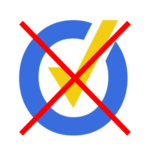 “Contrary to Cheney’s assertion, waterboarding was an important charge in a number of the lesser-profile cases.”
“Contrary to Cheney’s assertion, waterboarding was an important charge in a number of the lesser-profile cases.”
—Glenn Kessler, the Washington Post Fact Checker, from a Dec. 16, 2014 fact check of former Vice President Dick Cheney
Overview
In a fact check of the former vice president, the Washington Post Fact Checker muddies the waterboarding.
The Facts
Former Vice President Dick Cheney appeared on the Dec. 14, 2014 edition of “Meet the Press.” Host Chuck Todd interviewed Cheney and spent some time focusing on the issue of torture and detainee mistreatment. At one point Todd asked Cheney specifically about waterboarding (transcript via the Washington Post):
TODD
“When you say waterboarding is not torture then why did we prosecute Japanese soldiers?”CHENEY
“Not for waterboarding. They did an awful lot of other stuff. To draw some kind of moral equivalent between waterboarding judged by our Justice Department not to be torture and what the Japanese did with the Bataan Death March, with slaughter of thousands of Americans, with the rape of Nanking and all of the other crimes they committed, that’s an outrage. It’s a really cheap shot, Chuck, to even try to draw a parallel between the Japanese who were prosecuted for war crimes after World War II and what we did with waterboarding three individuals — all of whom are guilty and participated in the 9/11 attacks.”
Glenn Kessler, the Washington Post Fact Checker, rates Cheney on his claim that Japanese soldiers were not prosecuted for waterboarding. Kessler eventually gives Cheney’s statement three “Pinocchios.” The Fact Checker rates statements on a five-point scale ranging from a “Gepetto check mark” to four “Pinocchios.” Kessler defines three “Pinocchios” as “Significant factual error and/or obvious contradictions.”
Was Cheney wrong?
Analyzing the Rhetoric
Kessler’s analysis relies heavily on a law journal essay by Evan Wallach, Drop by Drop: Forgetting the History of Water Torture in U.S. Courts. This writer examined that essay closely the year it was published, finding it deeply flawed. Thus we had our early clue that Kessler goes awry with his fact check. We’ll first examine Kessler’s judgment of whether Japanese soldiers were prosecuted for waterboarding. After that we’ll look at Kessler’s claim Cheney engaged in “political misdirection” with his answer to Todd.
“Drop by Drop”
Evan Wallach’s essay has many errors, but the author errs chiefly by equivocating on the term “waterboarding.” The waterboarding technique approved by the U.S. government followed strict guidelines, using a covering for the face and inclined positioning. Each requirement occurs for a reason. Let’s look at the description of water torture from the Tokyo International Military Tribunal (bold used to highlight the part quoted in Kessler’s fact check):
To indicate the prevalence of torture and the uniformity of the methods employed we give a brief summary of these methods. The so-called “water treatment” was commonly applied. The victim was bound or otherwise secured in a prone [sic] position; and water was forced through his mouth and nostrils into his lungs and stomach until he lost consciousness. Pressure was then applied, sometimes by jumping onto his abdomen to force the water out. The usual practice was to revive the victim and successively repeat the process.
Note the record states the Japanese “water treatment” was applied commonly and uniformly. Note also that the technique involved forcing water into the stomach and lungs of the victim, and typically was repeated after the victim revived after losing consciousness. Why would a victim of the “water treatment” lose consciousness? The victims lose consciousness for lack of oxygen. The victim cannot breathe. The victim is drowning. Waterboarding protects victims from drowning. The cloth over the face minimizes the amount of water swallowed or breathed in, and inclined positioning likewise protects against taking water into the lungs. The goal of the technique is to make the victims think they are drowning, not to literally drown them. Wallach’s essay papers over these distinctions.
Kessler accepts Wallach’s narrative without questioning it, though he acknowledges “One could quibble about whether these practices were exactly like the techniques practiced by CIA interrogators.” These types of so-called quibbles represent exactly the types of things a fact checker should closely examine.
Were any of Kessler’s examples of prosecuted waterboarding close enough to the CIA techniques to justify the three “Pinocchio” rating?
Kessler’s lead example, occurring in Wallach’s essay, is interpreter Yukio Asano. The specifications against Asano fail to offer much detail about the “water treatment.” One specification charged Asano with pouring water into victims’ noses while they were bound head-down to a stretcher. That sounds similar to waterboarding, but it’s hard to pour water up noses with the face covered by a cloth.
Kessler offers three others facing charges like those against Asano:
One victim, Cpt. William Arno Bluehe, testified: “After beating me for a while they would lash me to a stretcher, then prop me up against a table with my head down. They would then pour about two gallons of water from a pitcher into my nose and mouth until I lost consciousness. When I revived they would repeat the beatings and ‘water cure’ …
Bluehe lost consciousness and had the “water treatment” repeated. That suggests his treatment matches the general description by the International Military Tribunal of the Far East of a literal repeated drowning. Kessler proceeds to admit the Japanese techniques were “harsher than the rules under which Americans were supposed to operate” but just after that concludes “Cheney is simply wrong when he claims Japanese soldiers were not tried for waterboarding.”
POW!
Wallach and Kessler brilliantly obscure the fact that Japanese defendants were not accused of breaking laws against torture. The Japanese defendants were accused of war crimes consistent with the laws of war in effect at that time. The Fourth Hague Convention of 1907 provided simple instructions for the treatment of prisoners of war in Article 4:
Art. 4.
Prisoners of war are in the power of the hostile Government, but not of the individuals or corps who capture them.
They must be humanely treated.
All their personal belongings, except arms, horses, and military papers, remain their property.
So the Japanese defendants could have broken the laws of war by using the CIA type of waterboarding against POWs. But even if they had, that wouldn’t make it torture. Giving a prisoner a wedgie for refusing to answer questions would likewise breach the Hague Convention that served as the legal foundation for prosecuting Japanese soldiers and their leaders. Wallach’s essay tries to imply the reverse, and Kessler follows along. Chuck Todd’s question to Cheney has the same implication, as we’ll discuss in the next section.
Political Misdirection
Todd’s question
NBC’s Chuck Todd was plying Cheney with a “gotcha” question. His question contained the implicit argument that if Japanese soldiers were “charged” with waterboarding then waterboarding must qualify as torture. Let’s review Todd’s question: “When you say waterboarding is not torture then why did we prosecute Japanese soldiers?” The implicit premise comes across clearly: If the United States prosecuted Japanese soldiers for waterboarding then waterboarding is torture. Todd’s implicit argument fails for reasons already discussed.
First, “waterboarding” as practiced by the Japanese differs from the waterboarding practiced by the CIA. That’s only a quibble if the differences don’t make the difference between a legal definition of torture and something less severe. That question isn’t settled for the time frame in question, though it’s clear the CIA waterboarding methods take steps to ensure victims do not take water into their lungs. The typical Japanese “water treatment” method does not.
Second, terrorist detainees do not qualify for POW status, either under the Hague Convention or the Geneva Conventions. The IMTFE prosecuted Japanese soldiers for failing to follow the laws of war, which called for humane treatment of POWs. There never was any specific charge or punishment for torture or waterboarding, though doubtless the tribunal took the degree of ill treatment into account when settling on the severity of the sentence.
Cheney’s reply
It’s true Cheney does not directly address Todd’s question. He addresses the guilt-by-association aspect of Todd’s question, linking the CIA’s waterboarding techniques with those of the regime most notorious for brutal treatment of POWs during World War 2. He also addresses Todd’s implied premise that Japanese soldiers were prosecuted specifically for a torture technique substantially identical to waterboarding.
Kessler’s spin
We think Kessler goes too far in pinning the “political misdirection” charge solely on Cheney. We fault Kessler for failing to identify the misleading aspects of Todd’s question to Cheney:
Cheney dismissed too cavalierly Todd’s question about the prosecution of Japanese soldiers for waterboarding. One could quibble about whether these practices were exactly like the techniques practiced by CIA interrogators. But Todd raised a legitimate question and, contrary to Cheney’s assertion, waterboarding was an important charge in a number of the lesser-profile cases. Moreover, waterboarding also resulted in at least one court martial during the Vietnam War.
As we point out above, Todd’s supposedly “legitimate question” contains a false premise. Legitimate questions and legitimate fact checks do not paper over potentially critical details. Good interview questions and good fact checks bring focused attention to the critical details.
Summary
The “water treatment” the Japanese used on POWs during the second World War is not the same as CIA waterboarding. Glenn Kessler’s fact check acknowledges differences but gives no sign of taking them into account in rating Cheney’s statement worthy of three “Pinocchios.”
“Contrary to Cheney’s assertion, waterboarding was an important charge in a number of the lesser-profile cases.”
We can read Kessler’s claim as true by applying charitable interpretation, but we charge Kessler with a fallacy of ambiguity for his failure to pay close attention to differences between Japanese “water treatment” and CIA “waterboarding” that could make the difference in whether the latter counts as torture. Calling two different techniques by the same name obviously minimizes any important differences between the two. That equivocation was implicit in Chuck Todd’s question to Cheney.
Kessler also fails to report differences in legal status between American POWs held by the Japanese and unlawful combatants detained by the United States. As a result, his fact check lacks important context. 
Though Cheney’s response did not deal with the literal phrasing of Todd’s question, his answer countered the subtext of that question. On the evidence, the Japanese “water treatment” differs from the CIA’s waterboarding technique. Differences in the techniques could make the difference in whether waterboarding counts as torture under its definition at the time the CIA used them. Moreover, Todd’s comparison of the two cases ignores differences in the way the laws of war would apply to each.
“Not for waterboarding.”
Cheney’s answer is true given a small degree of charitable interpretation. His statement needs some charity owing to the fact that many lump the simulated drowning of the CIA’s waterboarding technique in with superficially similar techniques that literally drown the victim. Though no Japanese, to our knowledge, were specifically prosecuted for using the “water treatment” on prisoners, the water treatment was listed among harsh treatments for which Japanese soldiers were prosecuted. Harsh treatment of POWs was forbidden by the Fourth Hague Convention of 1907 Respecting the Laws and Customs of War on Land.
Additional Note
The recently released executive summary of the Democrats’ so-called “Senate torture report” has no mention of CIA waterboarding rendering a victim unconscious. As noted above, the Japanese “water cure” often had that effect.
Afterword
Kessler includes in his evidence against Cheney a case where an American G.I. participated in giving the water treatment to a prisoner. Kessler reports the American soldier was “court-martialed within a month” after publication of a photo showing him pinning down a prisoner while others administered the “water rag” treatment. Kessler’s source in his story, Darius Rejali, provides no citation in support of the court-martial story, but Kessler told us “America in Vietnam” by Guenter Lewy was the original source. We found other published accounts saying the investigation after publication of the photo in the Post did not produce any courts-martial.
We hypothesize that the accounts do not contradict each other on the court-martial question. The American in the photo may have been court-martialed apart from the formal investigation. But we note from Wallach’s “Drop By Drop” that American soldiers subject to investigation, such as Staff Sergeant David Carmon, admitted using the water cure during their interrogations but were not court-martialed. This erodes our confidence in the idea that the soldier in the photograph was court-martialed just for using the water treatment.
References
Kessler, Glenn. “Cheney’s Claim That the U.S. Did Not Prosecute Japanese Soldiers for Waterboarding.” Washington Post. The Washington Post, 16 Dec. 2014. Web. 19 Dec. 2014.
Cheney, Dick. “Cheney on the Senate Intelligence Report.” Interview by Chuck Todd. NBC News. NBCNews.com, 14 Dec. 2014. Web. 18 Dec. 2014.
Kessler, Glenn. “About the Fact Checker.” Washington Post. The Washington Post, n.d. Web. 19 Dec. 2014.
Wallach, Evan. “Drop by drop: Forgetting the history of water torture in US courts.” Colum. J. Transnat’l L. 45 (2006): 468. Web. Dec. 18, 2014.
“Documents on the Tokyo International Military Tribunal.” Google Books. Ed. Robert Cryer and Neil Boister. Google, n.d. Web. 19 Dec. 2014.
“Terrorism: Commentary on Security Documents Volume 109.” Google Books. Ed. Kristen E. Boon, Aziz Huq, and Douglas C. Lovelace. Google, n.d. Web. 19 Dec. 2014.
Thiessen, Marc. “Courting Disaster.” Google Books. Google, n.d. Web. 19 Dec. 2014.
Ross, Brian, and Richard Esposito. “CIA’s Harsh Interrogation Techniques Described.” ABC News. ABC News Network, 18 Nov. 2005. Web. 16 Dec. 2014.
Styles, Jasmine. “Harmful Effects of Swallowing Water.” WLTX 19. WLTX News, 30 May 2014. Web. 19 Dec. 2014.
Levie, Howard S. “History of the Law of War on Land.” ICRC.org. International Committee of the Red Cross, n.d. Web. 19 Dec. 2014.
Lewy, Guenter. “America in Vietnam.” Google Books. Google, n.d. Web. 20 Dec. 2014.





